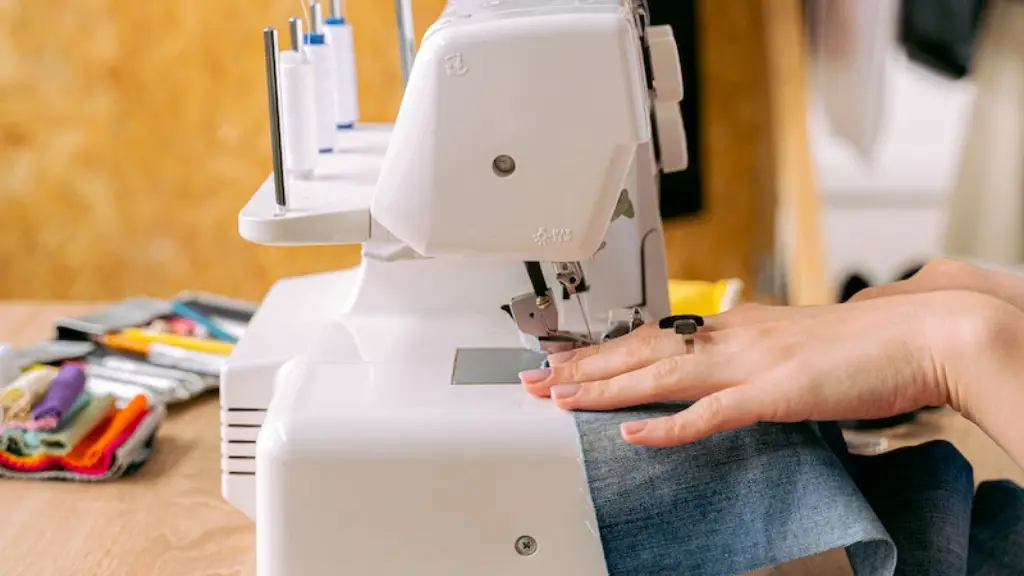Basics of Fixing a Sewing Machine
A sewing machine can easily become an invaluable tool for making exquisite garments, repairing clothes and even making curtains or bedding. However, sometimes it can become unreliable and start having issues. It’s important to know a few things about fixing a sewing machine before starting out.
The first thing to consider is the type of sewing machine. Depending on the type, you may need to consider different things while dealing with any problems. A mechanical sewing machine will require more manual labor, while an electronic machine will involve more electronics skills. Knowing the type of machine is the first and most important step.
The next thing to consider is the source of the problem. Before starting to work on fixing a sewing machine, it is important to have an idea of what is causing the issue. This will help with deciding which tools and components are necessary and also provide basic guidelines on how to fix the machine.
If the problem is an easy one to fix, then the best option is to find a manual for the specific machine model, as these are often full of all the instructions needed to get the machine back up and running. However, if the problem is more complicated, then it might be better to take the machine to a professional.
Professionals have the necessary skills and equipment to get the job done correctly and quickly. Furthermore, professional services are reliable and available on short notice. Of course, the cost may be a deciding factor. Nevertheless, it might be worth the money if the problem cannot be resolved with an amateur’s skills.
In any case, knowing the cost of the repair is always a good idea. Repair shops generally have standard prices, so getting the cost estimates is not really difficult. Prices may change depending on the complexity of the issue, but these can easily be asked before the repair begins. After an estimate is gotten, the cost of shipping the machine to the repair shop and bringing it back also needs to be calculated into the budget.
Another factor to consider is the availability of spare parts for the specific sewing machine model. Part replacements are generally the cheapest way to get a machine fixed, as it means swapping out only the faulty components. However, if the model is no longer available in stores, then finding the necessary spare part might be a bit more challenging.
Considering all the previously mentioned factors and elements, fixing a sewing machine can be a daunting task. It is important to be prepared, take it slow and stay levelheaded throughout the process. That is the best way to get the job done right without causing further damage.
What are Common Problems for Sewing Machines?
When it comes to sewing machines, the most common problems related to them involve threading, patching and even improper tension setups. Threading is generally the first problem one faces with a machine, as this needs to be done correctly for everything else to work properly. Improper threading means that the stitches might come out sloppy and uneven.
Patching is the process of repairing holes in fabric. This can be a bit tricky and requires a certain level of experience to be done properly. Improper tensions can either cause threads to break frequently or slacken up before the seams are fully formed. Both of these will lead to an unsatisfactory result.
In general, a strange noise coming from the machine can be a sign of any of these three issues. If this happens, the best option is to take a look at the owner’s manual and see what the issue can be. If the manual does not offer any advice, then the best option is to take it to a professional and have them take a look.
Additionally, when it comes to threading problems, a few simple steps can be taken before taking a sewing machine to a professional. Making sure the needle is in the correct position and that all the levers are set up correctly is essential for properly threading a machine. Check the manual for further steps.
Standard Costs for Sewing Machine Repair
In general, the cost for repairing a sewing machine can range from $50 to around $200, depending on the type and complexity of the machine. Furthermore, if spare parts are necessary then the price may change and even increase, so it is important to consider the cost estimates beforehand.
Generally, the cost will depend on the type of machine and where it is taken. Some repair shops have professional skill sets which may result in a more expensive cost than taking it to a more general repair shop. Larger and more sophisticated machines may also cost more to repair than smaller, more basic sewing machines.
It is important to know that if the sewing machine is less than 5 years old, then it is likely to still have a warranty in place. If this is the case, then the repairs might involve minimal costs or no fee at all. However, the exact details should be taken into account beforehand, as minor repair and maintenance items often require payment.
When Experienced Repair is Necessary?
Experienced repair is generally required when it comes to dealing with electricity, motors, intricate mechanisms and when dealing with difficult stitching, embroidery and other special projects. Generally, these can involve a lot of time and money, so it is important to have an idea of what is necessary beforehand.
Having a qualified and experienced repairperson is an invaluable asset, as they can provide all the necessary help and advice for repairing. They will also have the best equipment and understanding of the situation. Additionally, the job might involve certain repair guarantees for certain services.
However, it is important to know that experienced repair people may not be available or available on short notice. In this case, it may be better to find a repair person offering mobile services or coming over to the machine’s location. These are often more convenient and saves time.
What are Good Alternatives?
When it comes to repairing a sewing machine, a good first step is always to try fixing it oneself. This can be beneficial in situations where the cost to repair the machine is more than the price of a new one. Even if the attempt is unsuccessful, the experience will make it easier to troubleshoot issues in the future.
Another good alternative is to buy a second hand sewing machine. As long as the machine is in good condition, then it might be a good idea to get one and take it to a professional for maintenance. This will cost far less than buying a new one, and it might be as good as new when it comes back. Furthermore, if it works, it will give the user plenty of experience.
Free online resources may also be an option to repair a sewing machine. These can include repair tutorials, FAQs and guidebooks. Utilizing these may save money, as visiting a repair shop can be costly. Furthermore, since these resources are usually specialized, they can provide information on the specific model of the machine.
Without Replacement Parts What are the Options?
The lack of replacement parts is another common issue with sewing machines. This is because, as mentioned before, some models are no longer available in stores. In such a situation, the only option may be to look for any existing spares or parts in online stores or second hand shops.
If this fails, then it may be possible to fix a broken part, depending on the skill set and resources available. However, it is important to know that this kind of work requires a lot of experience and quite a lot of resources. If the attempt fails, then the problem will only become worse.
Alternatively, cannibalizing a second hand or damaged machine may be an option. This means taking useful components from other machines and using them in order to fix a machine. Although it will generally require some skill and resources, it might be a workable solution if no other options are available.
Finally, if all else fails and the machine is still not working, then it may be a good idea to look into either getting a new one or trying something else, like hand sewing. Although the machine is an invaluable tool, it is not an end-all solution and can be replaced with more traditional means when necessary.





